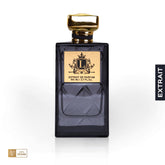What Is Ginseng? Where Is It Used?
It is a group of plants with about 12 species belonging to the genus Panax under the family Araliaceae. Real ginseng is derived from the plant's' Panax ginseng 'and' Panax quinquefolius'. The most common species are the American and Asian types. Both species have different health implications. The American style has a relaxing effect, while the Asian type has a refreshing impact. The ginseng plant is a short plant with slow-growing, fleshy roots. It is classified as fresh, white, or red based on how long it has been grown. Fresh is harvested before the age of 4.
The plant is called "Ginnsuu" in some parts of China and other parts of Asia. The term ginseng is derived from the Chinese word "rénshen," with "rén root" in this word meaning "person" and "sh" meaning plant root." This Chinese expression refers to the root of the plant, which resembles a human body. The tapered roots of the plant are about 5-30 cm long.
Benefits of Ginseng
- Ginseng can help lose weight thanks to its ability to suppress appetite and increase metabolism.
- Helps balance body systems by strengthening the whole body.
- It has a cholesterol-reducing effect.
- Cleans the liver from toxins.
- It has been shown in some studies that it prevents tumor development.
- It is useful in the treatment of bronchitis, asthma, and circulatory problems.
- It is also used as a natural supplement that increases sexual performance.
- Animal studies have found that it increases sperm levels.
- Relieves stress.
- Ginseng increases physical activity and body resistance.
- Strengthens the immune system due to its antioxidant properties.
- Good for anemia.
- Helps to eliminate problems related to menstrual pain and menopause.
- Ancient Chinese sources say that Panax ginseng has a highly effective tonic effect on the heart, lungs, digestive system organs, liver, and kidneys.
Both American ginseng (Panax quinquefolius) and Asian ginseng (Panax ginseng) roots are used orally to treat adaptogen, aphrodisiac, nutritional stimulant, type II diabetes, and sexual impotence in men. Roots are mostly used whole or sliced in dry form. Ginseng leaves, although not expensive, are sometimes used as roots and often sold in dried form. Tea is made from its leaves.
Ginseng content is used in energy drinks and mostly as a "tea" variety below the clinical dosage, the medical effects of which cannot be measured. Again, it is used in some cosmetic products. But no clinical medical effect of ginseng use in these products has been detected.
The Place of Use Ginseng
The plant carries triterpenic saponocytes, panaxosidecides, panaxatnol, Group D vitamins called ginsenocytes. Ginseng is a very famous herb of Chinese medicine. The plant has the property of regulating blood pressure, strengthening the heart, lowering cholesterol levels, stimulating the central nervous system, and incredibly relieving fatigue. It also has an appetizing and sexual power-strengthening effect.
Two different types of ginseng are usually in the foreground. These are Asian (Korean) ginseng and American ginseng. Asian ginseng is also called Panax ginseng, Chinese or Korean ginseng, or red ginseng.
Another plant commonly known as Ginseng is Siberian ginseng (eleuthero). But this original ginseng is not considered because it does not contain the active substance called "ginsenoit" in its root. But Siberian ginseng has similar healing properties as other ginseng types in terms of benefits, and it provides identical ginseng benefits.

